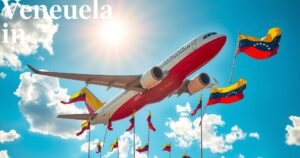The Role of Kurds in the New Syrian Framework: Challenges and Prospects

The agreement to integrate the U.S.-backed Kurdish SDF into Syria’s national army represents a potential unifying step for the Kurdish minority. However, dissatisfaction with the interim constitution, ambiguity surrounding military integration, and external pressures introduce complexities that challenge the prospects of achieving meaningful Kurdish rights in Syria.
Currently, the agreement to incorporate a significant, U.S.-supported Kurdish force into Syria’s national army signifies hope for unity and respect for the Kurdish minority, long sidelined in the nation. This arrangement aims to bolster interim president Ahmad al-Sharaa following recent violent uprisings against his government, triggering mass casualties and challenging his commitment to sectarian harmony.
The deal, signed on March 10, emphasizes the integration of the Syrian Democratic Forces (SDF) into the military and governance structures, a crucial step towards addressing concerns regarding the minority rights that the interim constitution falls short of recognizing. While the SDF, holding critical territory and resources in northeast Syria, sees promise in the unification, the vague language of the constitution limits recognition of their rights, keeping Arabic predominant in official matters.
Despite celebrations accompanying the agreement, Kurdish leaders have expressed dissatisfaction with the interim constitution, which refers only generically to minority rights and labels the country as the Syrian Arab Republic, excluding explicit references to Kurds. The political arm of the SDF has rejected the constitution draft, deeming it a reinforcement of authoritarianism and stifling political rights, which ignited protests across Kurdish regions.
The integration process remains ambiguous and fraught with tension, as interim president Sharaa aims to unify Syria’s myriad militias into a single army framework, yet this approach poses risks. Observers note the delicate balance of power, especially contrasted with the SDF member count and those loyal to Sharaa, indicating potential challenges ahead in completing the integration.
The viewpoint from the Turkish government complicates this context further, as Turkey views the SDF as linked to the PKK, a group it labels as terrorists. Some observers assert that this agreement is significantly influenced by U.S. backing, suggesting that American pressure facilitated the recent Kurdish advancements in negotiations, leveraging their militia’s position strategically.
While the agreement marks a significant moment for the Kurdish community in Syria, experts caution about the practical difficulties of disarming and integrating the SDF into the national army, considering the prevailing atmosphere of violence and the complex political dynamics at play. Many believe that the SDF will find it challenging to surrender its arms entirely, as loyalist militias have antagonized Kurdish forces, raising pivotal questions about the security of Kurdish identity and autonomy in Syria.
In conclusion, the integration of the SDF into Syria’s national structures promises a shift in the dynamics between the Kurdish minority and the central government. However, the vague constitutional framework regarding minority rights, ongoing tensions with Turkey, and the precarious security landscape indicate significant challenges to this integration. Moving forward, the realization of Kurdish rights within a unified Syrian state remains uncertain, necessitating careful navigation of both political agreements and military disarmament.
Original Source: www.csmonitor.com








